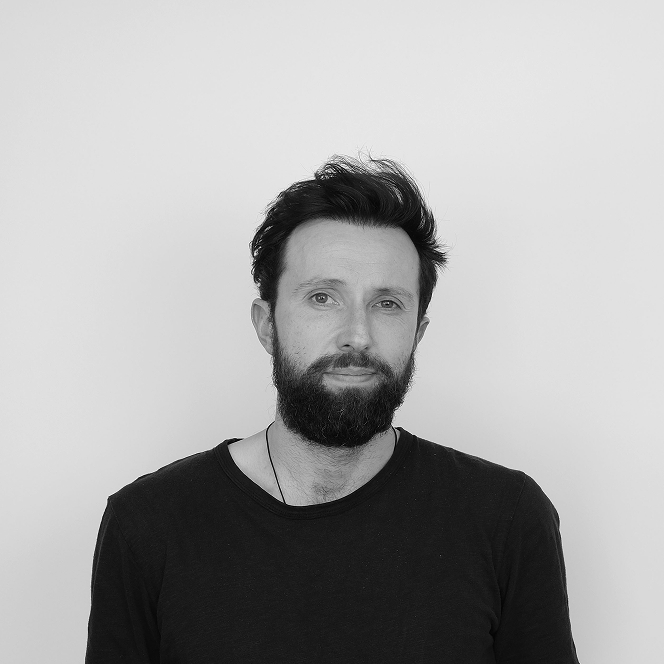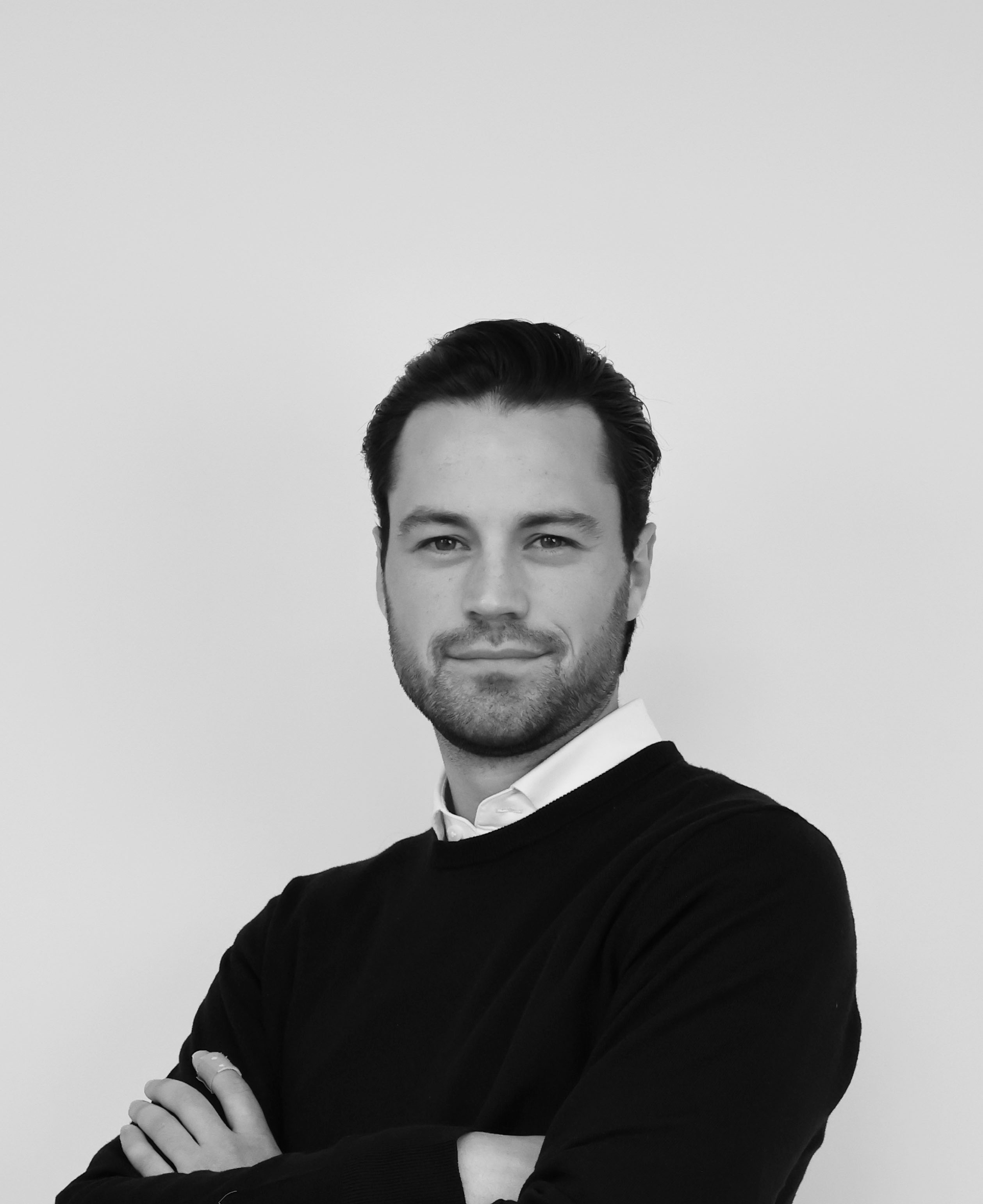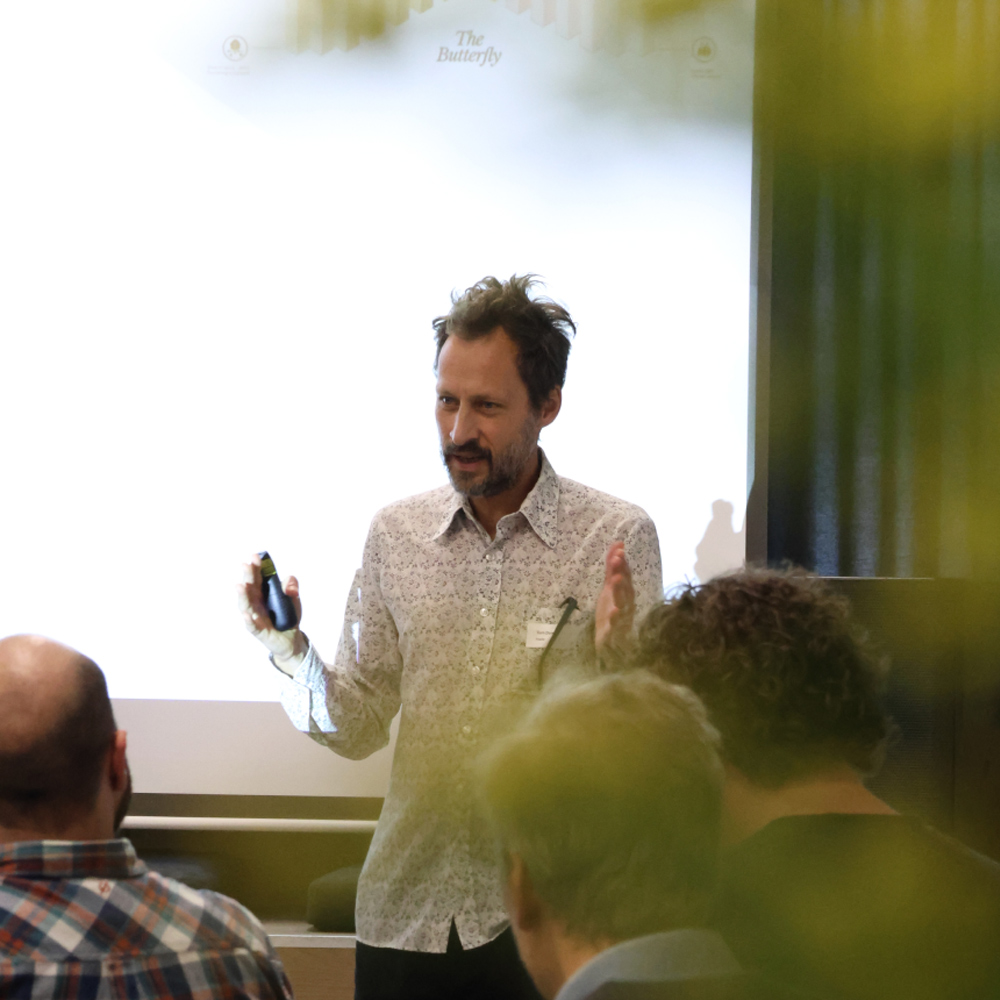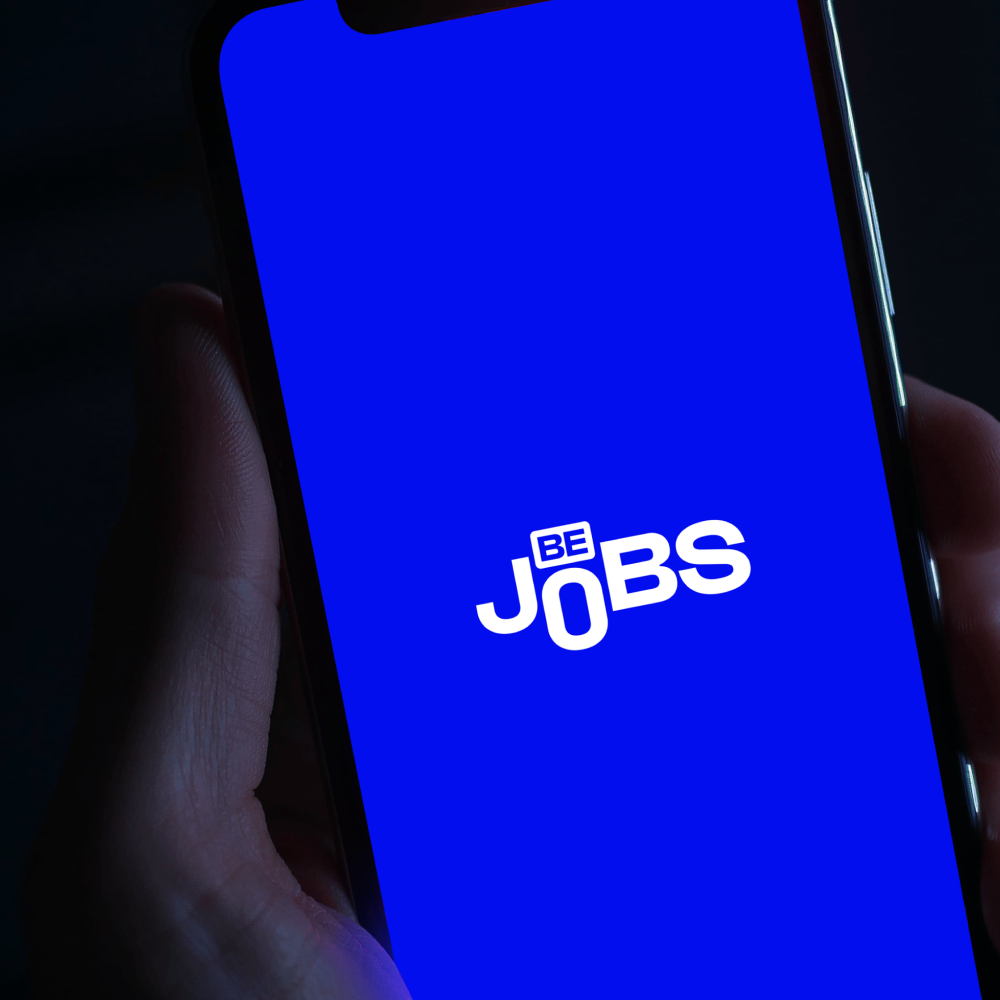Executive summary
On November 6th, we organized the exclusive business event ‘Beyond the Roadmap’ at our Antwerp HQ. For this event we brought together sustainability leaders from across the manufacturing and construction industry.
Guided by Kasper Benjamin Reimer Bjørkskov, the group explored the roots of today’s environmental ‘polycrisis’ and discovered what it truly means to move beyond the sustainability roadmap, going from pure business efficiency towards sufficiency and regeneration.
In this article, we briefly look back and capture the essence of the event.
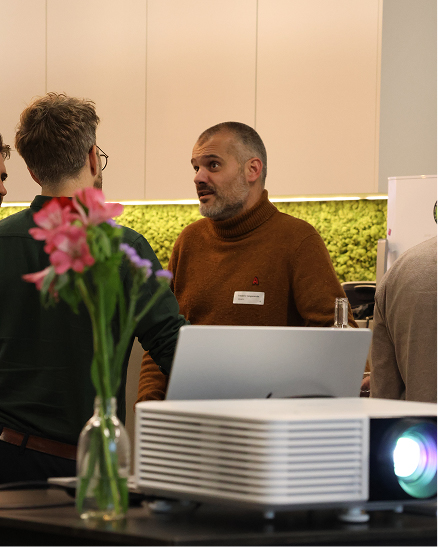

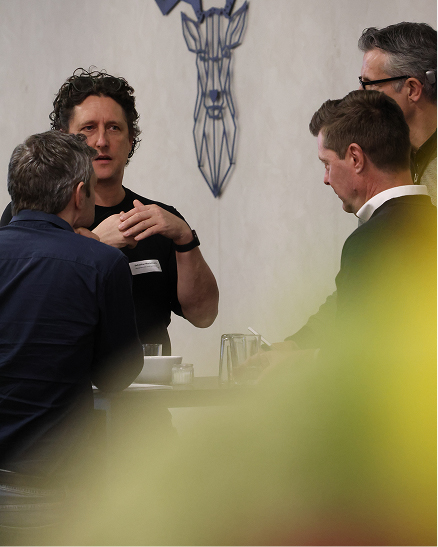
About Kasper Bjørkskov
‘Beyond the Roadmap’ was hosted by Kevin Verborgh (Director Manufacturing & Construction, Made), Tom Domen (Circular Innovation Strategist, Made) and guest speaker Kasper Bjørkskov.
Kasper is a Copenhagen‑based innovation strategist who has co‑authored the report ‘Beyond the Roadmap’. His work challenges traditional green‑growth narratives and urges industries to rethink conservative business models in terms of sufficiency, regeneration and operating within planetary boundaries.
While his perspective may seem radical in today’s context, it offers a clear vision of the direction business leaders should move towards when building a sustainable business model.



The As Is: a framework of consumption and growth
Understanding Kasper’s framework first requires a deep-dive into the reasoning behind it, which comes down to the definition of a polycrisis.
“A polycrisis is a situation where multiple, distinct crises interact and amplify each other, leading to a total outcome that is more severe than the sum of the individual crises. It is not just about crises happening at the same time, but about their complex, often causally entangled, relationships that create a new, emergent reality.”
In this case multiple environmental, economic and social systems are simultaneously under strain and interacting in ways that amplify risks. In his report, Kasper points out one of the main pitfalls when it comes to sustainability: a focus on single issues without seeing the bigger picture. As he explains, “we need to move beyond the ‘carbon tunnel vision’ to meet the challenge of the polycrisis.”
Typically, companies and governments highlight technological improvements and efficiency gains in sustainability. Yet these measures alone are not enough. The underlying problem is that our entire system is still built on a framework of consumption and growth. We can prove this because while energy efficiency has improved by roughly 36% since 1990, energy consumption has increased by 68%. This shows that efficiency gains are often offset by rising overall demand, keeping the system on an unsustainable trajectory. Science confirms the scale of the challenge: by 2060, humanity is on track to consume three times the Earth’s safe resource limits.
If we were coal miners, we would be up to our knees in dead canaries.

The To Be: a framework for regeneration
To meet climate targets and operate within planetary boundaries, the world must move far beyond incremental efficiency improvements. Currently, global carbon emissions stand at 54 gigatonnes of CO₂ per year. To return to a safe operating space, we need to reduce this to just 2.5 gigatonnes annually. The Reduction Roadmap pathway demonstrates that adhering to the Paris Accord requires a 97 percent reduction in emissions before the carbon budget is exhausted. This means addressing the current carbon debt and restoring climate balance by sequestering approximately 1.1 trillion tonnes of CO₂.
Efficiency alone will not save us. The future belongs to those who design for sufficiency and regeneration.
Not just another recruitment platform.
‘The Butterfly Framework’, introduced in the Beyond the Roadmap report, provides a dual approach for this transformation.
- The first component focuses on reduction. This involves actively decreasing emissions, rethinking production processes, and minimizing the carbon footprint of products and services. Reduction alone, however, is not sufficient to meet planetary limits.
- The second component emphasizes regeneration: restoring and protecting natural systems to ensure ecological integrity. For instance, currently only 15 percent of the world’s natural areas are protected, yet to meet the 30x30 framework target, at least 30 percent of the planet’s land and oceans must be safeguarded.
- The framework also highlights the importance of ensuring that half of all land continues to support functioning ecosystems, prioritizing biodiversity and long-term planetary health.
A central insight of the Butterfly Framework is the shift from efficiency to sufficiency. Efficiency seeks to do more with less, but sufficiency asks deeper questions: is this product or service truly necessary? Can it be redesigned to reduce consumption, conserve resources, and minimize environmental harm? For businesses, this means moving beyond surface-level “green” improvements and considering the broader impact of their operations on both climate and biodiversity.
By combining reduction with regeneration, the Butterfly Framework offers a clear pathway to move industries from being part of the problem to being part of the solution. Giving leaders the tools to rethink production, materials, and resource flows while actively restoring ecological balance.

In the meantime
While the insights shared by Kasper point to an inspiring future, companies today often face a gap between that vision and what is realistically achievable. Moving straight to that ideal is too abrupt, too radical, especially when current legislation doesn’t require it. So the question remains, how can you take meaningful steps today that set the stage for tomorrow?
A sustainability roadmap offers that bridge. It gives your ambition structure, turning broad goals into actionable steps. This way, you can align your teams and leadership better around shared priorities, ensuring compliance with current regulations and future requirements.
With +15 years of experience, we’ve helped many companies design such roadmaps, co-creating with leadership and teams to ensure they fit both the organization and its context. The result is a living document that evolves over time, guiding action, tracking progress, and keeping the company on course toward a sustainable future.
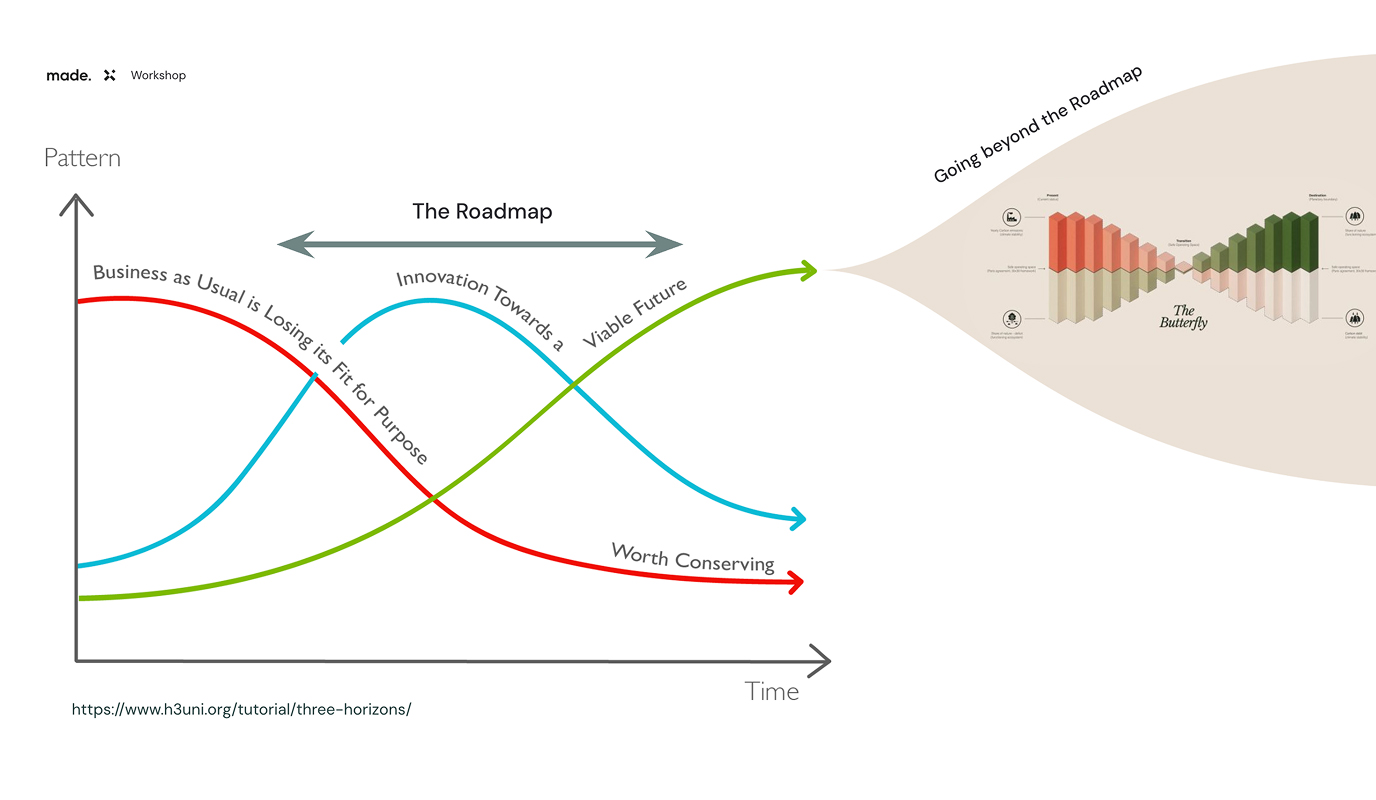
Looking ahead
While our November event has now concluded, we are already planning for our next gathering in February where we will dive deeper into how AI can be applicable in the manufacturing industry, but also in our other industries such as Maritime & Consumer products.

